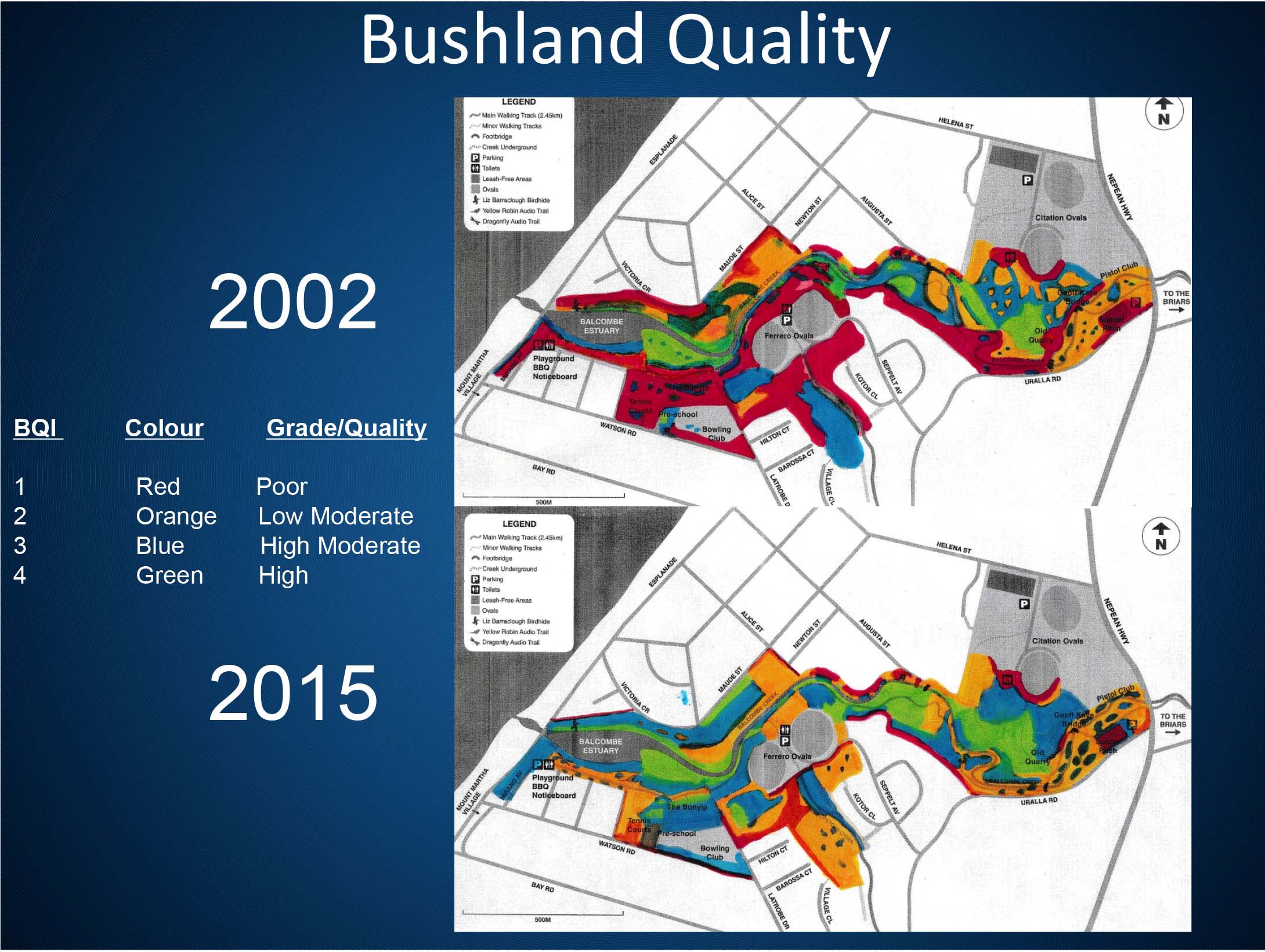Periodically, BERG Mt Martha seeks or commissions surveys of the flora and fauna (plants, birds, fish, frogs, animals) of the Balcombe Estuary Reserves. We do this to monitor the progress of the health of the reserves, especially the diversity of native species to see what progress is being made to encourage new diversity or limit diversity loss.
Read the Fauna survey of the Balcombe Estuary Reserves 2019
Read the Flora survey of the Balcombe Estuary Reserves 2019
Measuring Our Progress
How well is BERG Mt Martha doing in restoring the bushland in our reserves? What are the priorities for future work?
We use a 4-level Bushland Quality Index to provide a broad measure of this. The maps below compare vegetation quality in 2002 (when our first comprehensive survey was done) with 2015, and show the dramatic difference our work has made:

- Red = poor quality
(0-25% indigenous species cover – diversity low, weed invasion and disturbance high) - Orange = low moderate quality
(25-50% indigenous species cover – diversity low-moderate, weed invasion high-moderate) - Blue = high moderate quality
(50-75% indigenous species cover – diversity moderate-high, weed invasion low-moderate) - Green = high quality
(75-100% indigenous species cover – diversity and structural integrity high)
The next map is planned in 2025, to show our progress after another ten years.
We complement the maps with a detailed description of each zone of the reserves: its state in 1998, its state now, and action required. It’s a working tool that is invaluable for planning our ongoing work.
BIRD LIST
Birdlife Australia conducts a 6-monthly survey of birds in the Estuary Reserves for us. It shows that there are around 30-40 different bird species in the area.
The Birds of the Balcombe Estuary birds list (PDF) compiled in 2008 provides a check list of local birds that you can take to look for birds when you visit the Reserves.
CLICK HERE to return to the Flora & Fauna page





